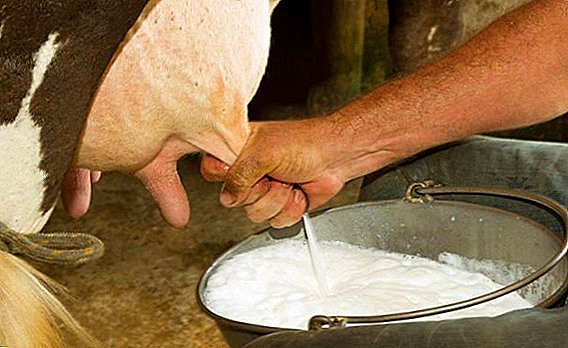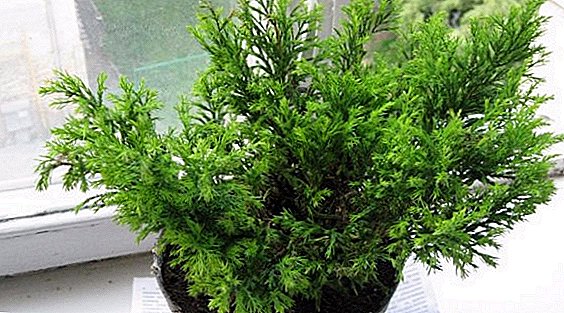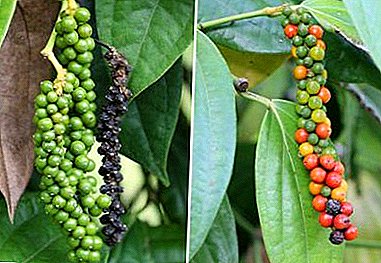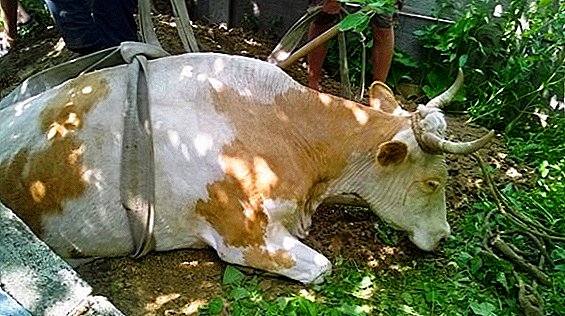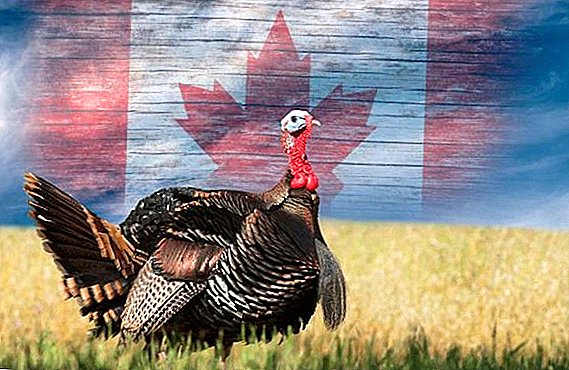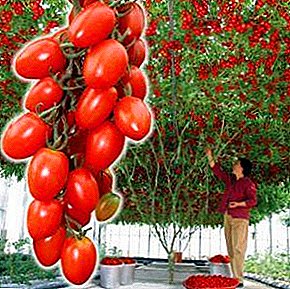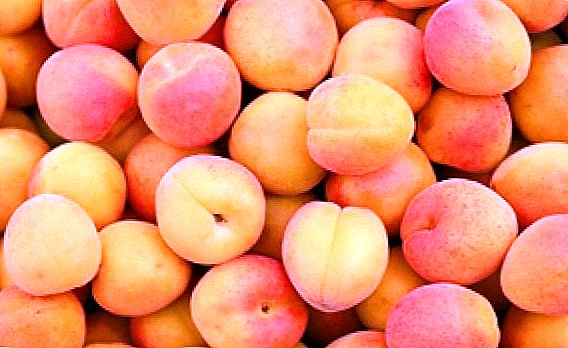
Apricot is a fruit and berry culture, which is very common in our area.
In areas of gardeners, it occupies a very important place. The blooming and smelling tree is not real not to be noticed in the springtime of the year.
The range of this culture is very large. To grow apricot in your garden can any gardener, there would be a desire.
It is worth a lot to try the gifts of your site fresh, not to mention the various compotes and preserves.
How to decide on a grade of apricot and not to be disappointed in the choice, we will tell about it today. The berries of this tree love to eat everything.
Red-cheeked apricot distinctive features of this culture

The fruits of this apricot are different wonderful sweet tastethat well affects his reputation. The weight of one berry is about 50 grams, inside there is a bone, which is quite well separated from the pulp, its weight takes about 6.2% of the entire mass of the berry.
Their form is round a little even ovoid, but not compressed on each side. It has an orange color with a small blush that looks very nice, and the flesh is a little lighter than orange. Apricot skin is velvety, not thick. This variety contains the following components: solids 13.6%, sugar 9.8%, acid 1.36%.
The term of ripening of this type is average, the first fruits can be tried for 3-4 year after planting the seedling. It does not need additional pollinators, as it is a self-fertile tree. Full maturation occurs in the third decade of July. The yield of this tree is up to 100 kg per year.
The tree is of medium height. Crown spreading, wide-round. Green leaves. Fruits on spur, bouquet branches and last year's growth.
Virtues red cheeks apricot:
- fruits have good taste.
- berries are versatile to use.
- It has good winter hardiness.
- not whimsical to different types of soil.
- tolerates dry periods of the summer season.
- possesses high productivity, bears fruit every year.
- tolerates various fungal diseases.
- possesses good transportability.
- This variety is self-fertile.
TO disadvantages This variety includes the following items:
- If it is not good enough to care for the tree, then every year the yield will become less and the berries will be small.
- Wood does not tolerate moisture very well.
Melitopol early apricot - the main characteristics

The berries of this medium-sized culture are about 35-40 grams. Their shape is oval, slightly compressed at the sides. The taste of apricot sweet, without sour.
The color of the fruit is yellowish-orange, with a predominance of reddish blush and small subcutaneous spots.
The color of the pulp is orange, the pulp itself is not fibrous, juicy with a predominance of sweet-wine taste.
Inside there is a bone, small in size, which is very easily separated from the pulp. The berries of this tree are used not only for fresh consumption, but also for various seaming. The skin of the fruit is thin and velvety.
The term of maturation of this variety is early, you can try the first fruits for 4-5 years after planting the seedling. It does not need additional pollinators, as it is a self-fertile tree. Full maturation occurs in the first and second decade of July. The yield of this tree is up to 55 c / ha per year.
The height of an adult tree reaches 5-6m. The crown of the tree is medium hardwood, with the shape of the inverse pyramid. Reproduction occurs due to green woody cuttings. The leaves of the tree are greenish in color, small in size, jagged to the top, and oval at the bottom.
TO positive qualities This variety can be attributed to:
- A good quality is the sweet taste of the fruit of this variety.
- Berries of this variety can be used in any direction.
- This variety tolerates winter frost.
- Melitopol apricot belongs to the early varieties of ripening.
- With good care for the crop, it will give you a high yield.
- Treats self-fertile varieties.
- Not afraid of various fungal diseases.
- The advantage is that the berries have a thin skin.
- It tolerates very wet soils.
Negative qualities include the following categories:
- The fruits of this tree are not suitable for transportation, except that in the immature form.
Polesia large-fruited apricot variety - its main characteristics

The fruits of this apricot have a sweet-sour taste. The weight of one berry is about 55 grams, inside there is a bone, which is quite well separated from the pulp, has a small size. Their form is round a little even ovoid, but not compressed on each side.
It has an orange color with a small blush that looks very nice, and the flesh is yellowish, juicy and slightly crispy. Apricot peel is slightly velvety, not thick. This variety contains the following components: solids 16.5%, sugar 12%, acid 2.36%.
The term of ripening of this type is average, the first fruits can be tried for 3-4 year after planting the seedling. The period of flowering culture occurs at the end of May.
Requires additional pollinators in partsuch varieties as Khabarovsk and Amur are suitable as pollinators. Full maturity falls on the third decade of July or the beginning of August. The yield of this tree is up to 112 kg per year.
Tree vigorous. The crown is spreading, round elongated. The shtamb is not thick. The bark of the tree is covered with small tubercles.
The buds are large, brown in color, arranged in three pieces. The leaves are green, too large, dull and smooth. The flowers in the inflorescence are pinkish, saucer-shaped. Fruits on spur, bouquet branches and last year's growth.
TO positive qualities This variety includes the following items:
- The advantage is that the culture has large fruits.
- Berries have a good presentation.
- In bad weather, the fruits do not crack.
- This variety is resistant to various fungal diseases.
- It tolerates rainy and dry periods of the season.
- Culture gives great harvests.
- The fruits have good transportability.
- The flowers of the tree are resistant to slight spring frosts.
- Culture tolerates winter frosts.
- Apricots can be used both fresh and for various roll-in.
- Treats grades of hardy type.
One of the disadvantages of this type of apricot is that in some years, there is an excess of moisture, fruits are affected by black specks, to prevent this from happening, they must be treated with fungicides. And also the fact that the tree is partially self-bearing refers to the minus of this variety.
What is good Kuibyshev anniversary variety of apricot?

The fruits of this variety are small compared to the varieties listed above and the weight of one berry is up to 25 grams.
Possess a round not oblate form. The stem of a berry is not long, it comes off well from it. In the middle there is a bone, small in size, possessing a small roughness.
The color of the fruit is normal orange, on the sunny side a small blush is formed. There are no subcutaneous points on the fruit. The berries of this variety have a thin skin, the pulp is orange, there is a slight fibrousness. Taste sweet little sour, juicy fruits. This grade of apricots contains: solids 12.6%, sugars 8.9%.
Maturation period of this species is average, the first fruits can be tasted for 4 years after planting the seedling. The period of flowering culture occurs in early May.
Fruits can be removed at the end of July, the crop must be removed from the tree immature. Needs additional pollinators in part. Such varieties as Samara and Dwarf will be suitable as additional pollinators. The yield of this tree in the seventh year of life is up to 15 kg, and for 13 year of life it is 45-50 kg.
The tree of high growth reaches about 6 m. The krone is rare, wide-pyramidal. The shtamb is not thick. The bark of the tree is slightly cracked, brown in color with a predominance of gray. The leaves are more dark green, large, slightly elongated towards the top. The flowers in the inflorescence are pinkish, saucer-shaped. Fruits on the spur and bouquet branches.
TO pluses This variety includes:
- This grade is intended for any use.
- The presentation and quality of the berries of the highest level.
- There is the possibility of transportation over long distances, it does not affect the state of the fruit.
- It tolerates winter frosts quite well.
- The culture is resistant to bark subsidence.
- Not bad tolerates dry periods of summer.
- The tree has good resistance to fungal diseases.
TO cons This variety includes:
- Apricot fruits must be removed from the tree immature.
- To obtain a good crop needs additional pollinator varieties.
- In wet years, fruits may be exposed to moniliosis.
Pineapple Apricot Variety: What Is It?

Fruits of this variety are rather large, about 50 grams. They have a round irregular shape, the surface of which is covered with tubercles. The stem of a berry is not long, it comes off well from it.
In the middle there is a small bone. The color of the fruit is yellowish, without the predominance of any blush. The berries of this variety have a thin skin, the flesh is light orange, there is a slight fibrousness. Taste is sweet, fruits are juicy.
Maturation period of this species is average, the first fruits can be tasted in the fourth year after planting the seedling. The period of flowering culture falls in the middle of May.
Fruits can be removed from the tree in mid-July, the harvest must be removed from the tree on time, as overripe fruits are much showered. Does not need additional pollinators, as it is a self-fertile variety. The yield of an adult tree is up to 145 kg.
Tree of medium height. The crown is not very dense, rounded shape, it is necessary to prune the branches. The leaves are green, large. The flowers in the inflorescence white-pinkish, saucer-shaped. Fruits in the majority of fruit twigs.
TO benefits This variety includes the following items:
- Pineapple apricot variety has a high yield.
- Fruits are suitable for fresh consumption, frozen and for seaming.
- The culture has good resistance to fungal diseases.
- It tolerates winter frosts.
- Pineapple berries have excellent transportability.
- The variety is self-fertile and does not need additional pollinators.
TO disadvantages Pineapple apricot include:
- It is necessary to monitor the ripening of the berries, otherwise when overripening, the fruit is very much showered from the tree.
Briefly describe the general features of caring for apricot trees.
Tree care includes the following activities: pruning and watering crops, what fertilizers are needed, how to protect the crop from diseases and pests, and how to save it from winter frosts.
Tell you about some points pruning apricot

All gardeners know that apricot is light-loving and skimpy culture. These trees are capable of very rapid growth, especially for young trees, so you need to trim the crown. The main task of pruning this crop is annual pruning of the branches, so that later stronger and larger shoots are formed.
We describe the small trimming features for each period of the year:
- Many gardeners believe that pruning in the winter is best, but it’s not. This is best done when the air temperature does not fall below 5 ° C. In the quiet period, the wounds heal faster, and before the vegetative process the tree is fully restored. And in winter the tree will become very fragile, which is not very good.
- Summer coinage is best done in August.
- Autumn pruning is needed to prepare the tree for the winter period.
- Spring pruning is carried out in order to cut off the branches damaged by winter frost, as well as to slightly damage the crown of the tree.
Watering apricot trees
This culture is very it is important to provide water. It is known that apricot trees tolerate drought very well, but for this they need to be watered.
For suburban areas suitable method of irrigation of the ring ditches. The first watering is done either before flowering or during flowering. Second watering, when shoots begin to grow intensively. The third watering is 10 days before the fruit ripens. The following watering of the soil is made in the late autumn, for the best overwintering.
What fertilizers are suitable for this crop?
When planting fruit trees must be fertilized. The pit is prepared in the fall, falling asleep the bottom of 10 cm of rubble or coarse sand for drainage. Then fall asleep humus with fertile land.
For 2-3 summer apricots apply in spring liquid chicken manure with kopmostom or peat.
In autumn, such trees are fed with organic fertilizers.
And the trees are slightly older than 4-5 years of life, liquid chicken droppings are brought not in spring, but in autumn.
What measures to apply to protect trees from diseases, pests and winter frosts?

Apricot trees can infect such pests as moth, leafworm, aphid. To wage war against these pests will help special solutions of insecticides. You can buy them on the market, as well as cook yourself.
Everyone knows that if a tree has fungal diseases, its productivity decreases. The most dangerous of them are monilioz, klyasterosporiosis and brown spot. But it is known that it is better to prevent the disease than to treat it. Various wounds and injuries are smeared with special pitch. Also this culture is necessary spray copper containing preparations.
Special measures to protect the tree from the winter frost is not necessary. Cover and insulate the culture is not worth it. In the period of thaw, it is necessary to simply clear the snow around the tree.
Apricot planting summary
For planting this culture choose sunny place. You should not choose a place near the house, it needs a lot of space. Seedlings are planted at a distance of about six meters from each other. In order for seedlings to settle down, they are put in water for 24 hours before planting.
Consider the features of planting apricot:
- In the autumn, this process begins in the month of October. To do this, prepare the pit 14 days before planting, mixing the soil with fertilizers. The dimensions of the pit should be 50 cm deep and 70 cm wide. This time will provide an opportunity to condense the ground in the pit, with the result that it will be much more correct to place the young.
- In the spring, planting is done before the beginning of the growing season, but the pits are still prepared in the fall, and fertilizers are applied. During the winter, the earth adopts all the necessary trace elements, which further has a good effect on the growth and development of culture.


